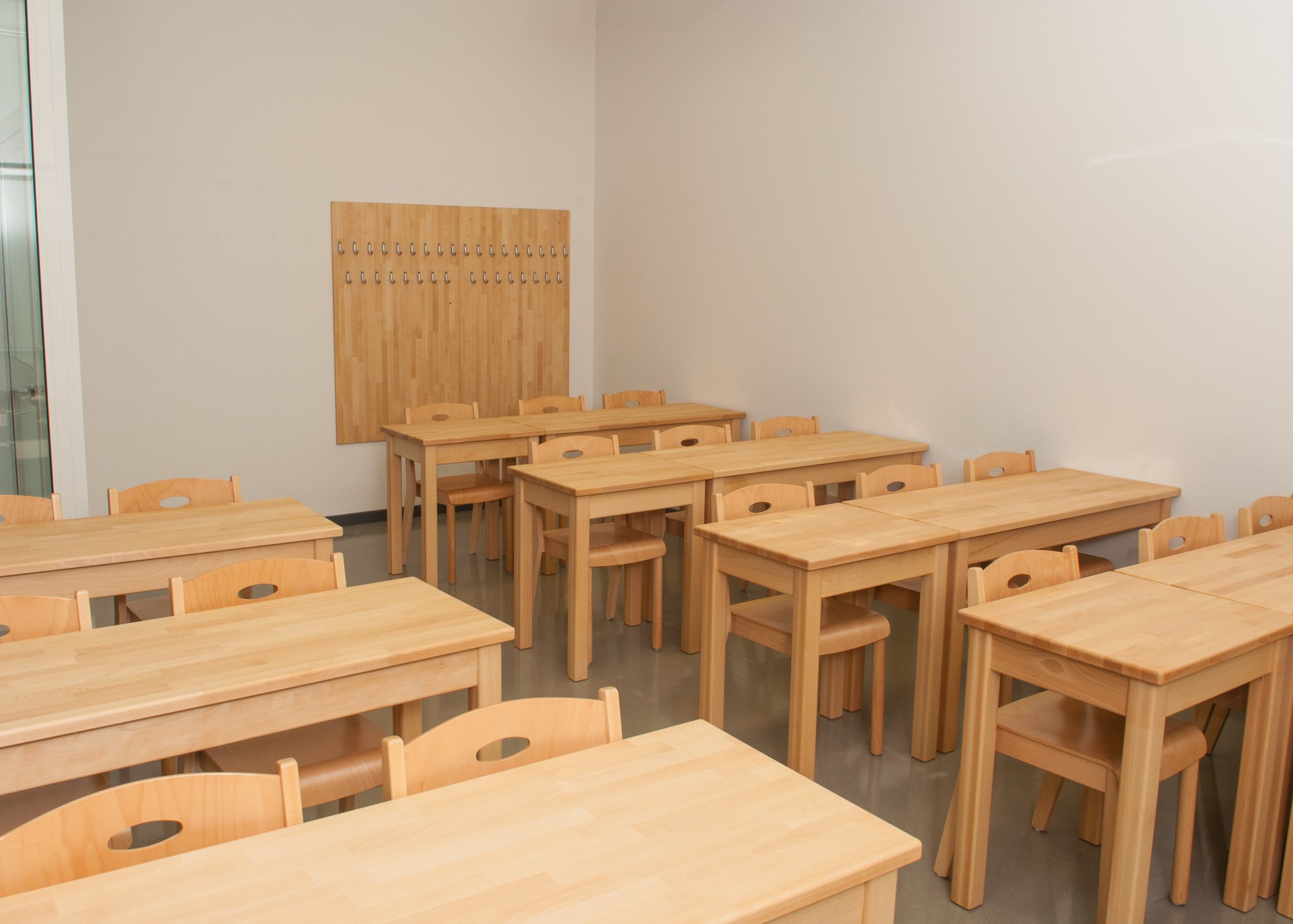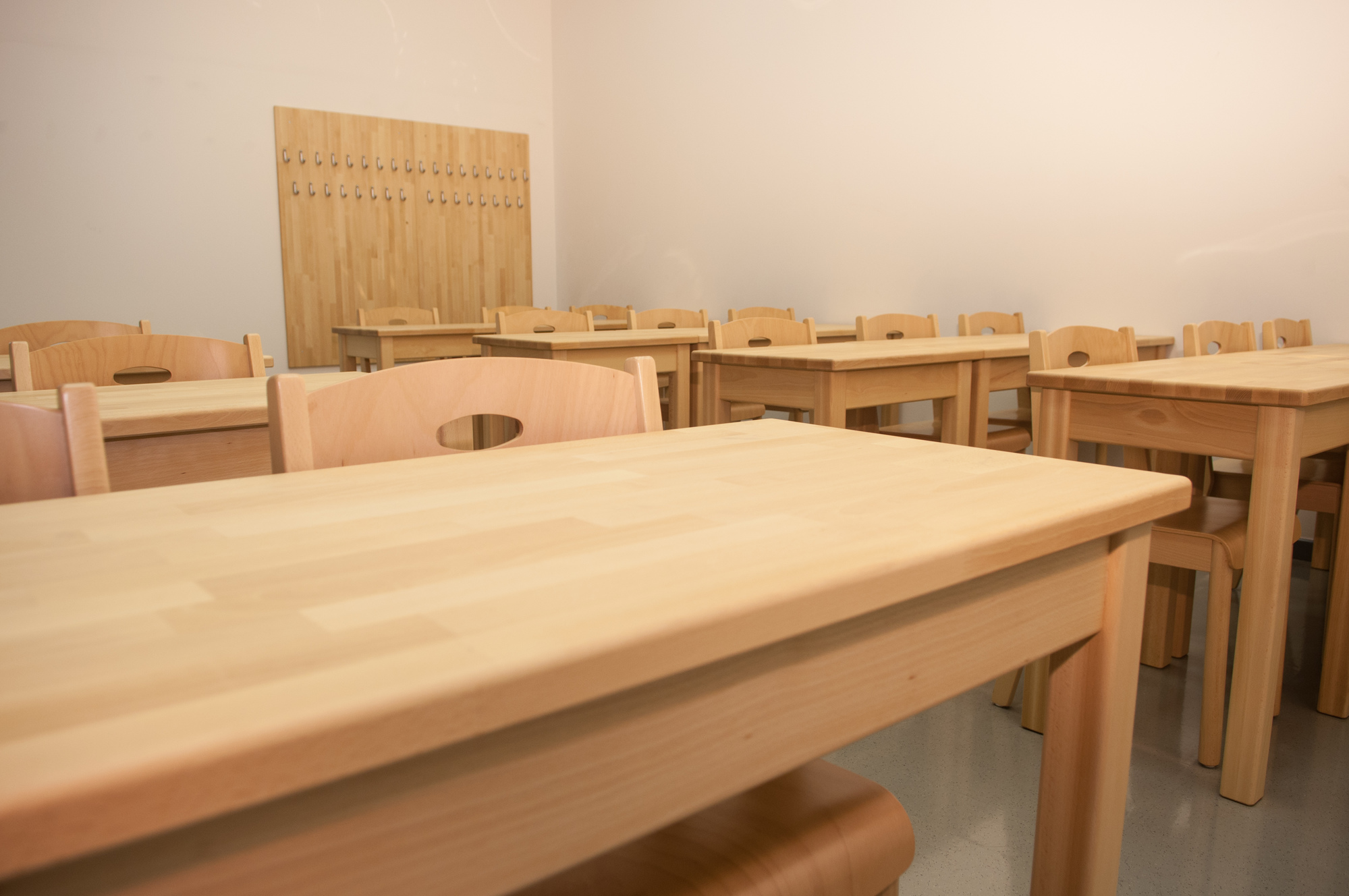Caring for the Environment
printBesides implementing the study programmes Biodiversity and Nature conservation, our Faculty also contributes to environmental protection and raises environmental awareness through various projects and activities. When browsing our website, please look for the icon  which marks environmentally-friendly contents, projects and activities. Below, we describe projects held at UP FAMNIT as well as projects held by other members of UP in which our teachers and researchers participate.Within this context you can also read about some environmentally-oriented COST actions.
which marks environmentally-friendly contents, projects and activities. Below, we describe projects held at UP FAMNIT as well as projects held by other members of UP in which our teachers and researchers participate.Within this context you can also read about some environmentally-oriented COST actions.
UP FAMNIT projects
International summer school Production of Housing in Europe: Innovation, Conservation and Design with Natural Resources (in co-organization with OSU)  top
top
The Summer school will be held in Switzerland, northern Italy,  Slovenia, and Austria. The built environment within which we live, study, and work has a significant environmental impact. This Summer school explores the sustainability of the built environment, following the value chain of wooden buildings starting in the forest and following through manufacturing, construction, and use of various types and designs of housing.
Slovenia, and Austria. The built environment within which we live, study, and work has a significant environmental impact. This Summer school explores the sustainability of the built environment, following the value chain of wooden buildings starting in the forest and following through manufacturing, construction, and use of various types and designs of housing.
 Project ''ECO Classroom''top
Project ''ECO Classroom''top
A demonstration of best practise for using natural materials in public buildings
UP FAMNIT understands that the built  environment has an affect on the health and well-being of a building’s users - students, faculty staff and visitors. People spend approximately 80 % of their time indoors, making these environments very important for one’s health. New interdisciplinary research at UP FAMNIT examines restorative environmental design by studying sustainable building, natural materials and healthy indoor environments. In order to offer our students, faculty staff and visitors the best experience, we have furnished a classroom with solid wood tables and chairs as part of the ''Wood as an element of restorative environmental design'' project and named it the ''ECO FAMNIT'' classroom. The new tables and chairs are made from locally harvested and processed beech wood and coated with linseed oil. Tables are topped with solid wood panels, and the legs are made of solid beech. The seats and backrests of the chairs are made of plywood, while the frame and legs are solid wood.
environment has an affect on the health and well-being of a building’s users - students, faculty staff and visitors. People spend approximately 80 % of their time indoors, making these environments very important for one’s health. New interdisciplinary research at UP FAMNIT examines restorative environmental design by studying sustainable building, natural materials and healthy indoor environments. In order to offer our students, faculty staff and visitors the best experience, we have furnished a classroom with solid wood tables and chairs as part of the ''Wood as an element of restorative environmental design'' project and named it the ''ECO FAMNIT'' classroom. The new tables and chairs are made from locally harvested and processed beech wood and coated with linseed oil. Tables are topped with solid wood panels, and the legs are made of solid beech. The seats and backrests of the chairs are made of plywood, while the frame and legs are solid wood.
 In addition to the ''ECO FAMNIT'' classroom project, UP FAMNIT collaborates on interdisciplinary projects with UP IAM and the Department of Wood Science and Technology at the University of Ljubljana, among others. We hope to improve the perception of wood as a material for healthy and sustainably-built living environments through rigorous research, education and awareness programs.
In addition to the ''ECO FAMNIT'' classroom project, UP FAMNIT collaborates on interdisciplinary projects with UP IAM and the Department of Wood Science and Technology at the University of Ljubljana, among others. We hope to improve the perception of wood as a material for healthy and sustainably-built living environments through rigorous research, education and awareness programs.
Project EnergyViLLab top
top
Network of Living Labs, virtuous in energy saving and in the development of renewable energy resources
By creating a network of Living Labs called EnergyViLLab (Energy Virtuous Living Lab), the project focuses on the use of RRM applications (renewable energy resources, rational use of energy and sustainable mobility systems). Project activities take place in Veneto, Friuli Venezia Giulia, Emilia Romagna and in the Coastal-Karst Region, the Goriška Region and in Central Slovenia. In this cross-border region, the partners in the project aim to establish a total of 6 pilot Energy Virtuous Living Labs. At UP FAMNIT, we intend to develop a living laboratory, called the SME Villab. This environment will connect small- and medium-sized enterprises operating in the field of energy efficiency in houses, along with the University of Primorska, and the municipalities and residents of the region. All those included in the SME Villab will be co-creators in reaching the goal of SME Villab, i.e. to increase the energy efficiency of private houses and consequently reduce pollution in the region.
Project W³B top
top
What we Wood believe? Societal perceptions of the forest-based sector and its products towards a sustainable society
Today, more than ever, the forestry sector has become an area of increasing societal interest, and crucial changes have taken place in the perceptions of and demands on forests by society. Major issues have included increased environmental awareness and the recreational interests of society, as well as public perception of the traditional role of forests as sources of raw materials. At the same time, the urge to re-orient societies towards “sustainable”, “green” and/or “bio-based” economies results in higher demands for raw material, not only for increasingly sophisticated bio-based products, but also for providing renewable energy.
The forest sector, which plays a leading role in a green economy, is promoting sustainable development within the forest sector and outside. Unleashing the potential of the forest-based sector to take the lead in developing a bio-based society will create new jobs and improve the livelihood of millions of citizens across Europe. The forest-based sector also plays a pivotal role in society’s battle against climate change as well as the need to adapt to it. The sector’s actual contribution, however, is dependent on policymakers as well as on European citizens and how they perceive, accept and promote forest-based products and the activities carried out to produce these products.
In light of these developments, the overall objective of the W3B-project is to create and demonstrate innovative, cost-efficient ways for communicating to stakeholders the relevance of the European forest-based sector and its products for a sustainable bio-economy. Issues of importance include:
- impacts of climate change on forests
- climate policy including forests and wood products in carbon accounting
- wood products as substitutes for more resource and climate intensive materials (e.g. building with wood instead of other common building materials)
- uncertainty of user and producer acceptability of technologically new bio-based products
- better understanding of supply and demand of new bio-based products in the emerging bio-economy
- woody biomass becoming an important raw material for bio-refineries and energy production
- the increasing demand for wood stressing the issue of mobilization from fragmented forest ownerships and sustainable harvesting
Projects of other members of UPtop
Below are desciptions of projects held by other members of UP in which our teachers and researchers participate.
Project BioDiNet top
top
Network for the protection of biodiversity and landscape
Leading institution: UP ZRS
The project's purpose is to preserve the natural and cultural heritage of the Karst Edge (Kraški rob) in Slovenia and establish guidelines for the sustainable development of the area. The project aims to contribute to the preservation and promotion of native species, breeds and ecosystems, the conservation and study of grasslands, raising awareness and educating the target audience, and study of the genetic and ecosystem diversity. We want to increase the attractiveness and competitiveness of the program area and to contribute to the preservation of native species and associated ecosystems. For example, controlled grazing helps maintain diversity in the grassland areas and in tree stands before forest fires, and has a direct impact on protecting water resources. We will prepare guidelines for sustainable development and measures for the preservation of natural heritage, and for the construction of infrastructures to carry out various programs to protect biodiversity, information centres and botanical gardens. The project also provides for the resettlement of Istrian cattle (boškarin) in Slovenian Istria.
The project involves teachers and researchers from FAMNIT's Department of Biodiversity and the Department of Applied Natural Sciences.
Project NETCET top
top
Network for the Conservation of Cetaceans and Sea Turtles in the Adriatic
Leading institution: UP ZRS
The main objective of the NETCET project is to develop common strategies for the conservation of cetaceans (whales and dolphins) and sea turtles in the Adriatic through regional cooperation.
The Adriatic sea hosts several species of cetaceans and sea turtles and is considered a key foraging and development area for young sea turtles. Unfortunately cetaceans and sea turtles are vulnerable in their interactions with human activities, especially those related to fisheries and coastal tourism (e.g. impacts with recreational boats).
Cetaceans and sea turtles represent a shared endangered natural heritage which cannot be managed by any single state working in isolation. Due to the migratory nature of these species and the joint responsibility of Adriatic states, collaboration is essential to planning effective long-term conservation strategies.
Marine biodiversity conservation problems - and more specifically conservation of cetaceans and sea turtles - are common to all countries across the Adriatic, but experience in this area varies from state to state, and there is thus much to be gained by bringing together best practices and experience with the aim of defining a common conservation framework and tools/measures for the conservation of endangered marine species, and for making these tools readily available to other regions towards the end of the project. For these reasons the NETCET project, coordinated by the City of Venice, is managed by 13 partners situated in several countries of the Adriatic Basin: Italy, Croatia, Albania, Montenegro and Slovenia.
The project involves teachers and researchers from FAMNIT's Department of Biodiversity.
Project SIGMA 2 top
top
Cross-border network for sustainable management and biodiversity
Leading institution: UP ZRS
The project aims to contribute to Cross-border biodiversity conservation and to the improvement of environmental conditions. The aim of project activities is both biodiversity protection and initiatives dedicated to reduce the impact of agriculture in particular. Planned activities include study and analysis initiatives to improve knowledge of the area, the development of environmental models, and the creation of protected biodiversity areas, such as Mediterranean gardens and conservation fields. The project also envisages the establishment of the Mediterranean Crop Centre (MCC), which would represent a permanent structure dedicated to the protection of the program.
The project involves our teachers and researchers from the Department of Biodiversity and the Department of Applied Natural Sciences.
Project DIVA top
top
Remediation of illegal waste dumps and raising awareness of its harm
Leading institution: UP ZRS
A major specific objective of the project is to rehabilitate illegal landfills and to contribute to improving the quality of the environment on both sides of the border. The project will contribute mainly to improving soil quality, landscape and groundwater. Illegal landfills often contain toxic waste which releases toxins into the soil and groundwater and poisons them. The problem is particularly pronounced in karst soils that are typical for Istria. Inadequate waste disposal is also disturbing for aesthetic reasons, and has a negative impact on the landscape. The project provides for the rehabilitation of selected illegal landfills, which will reduce the contamination of soil and groundwater, and lessen negative impacts on the landscape. In this way, the rehabilitated areas will provide more high-quality space, which will be more attractive to visitors and residents, and less subject to vandalism.
A further aim of this project is rehabilitation and increasing levels of biodiversity. It is shown that high concentrations of toxins, which are often found in illegal dumps, can be held responsible for the absence of susceptible plants, as different species have very different tolerances to the toxin threshold. Another problem which often occurs in illegal landfills is ecosysytem disruption casued by non-native plant and animal species.
Revitalisation of the illegal landfills and preventing new illegal sites includes a very important objective of reducing risks to human health. Inadequate waste disposal in areas containing water resources may lead to contamination of drinking water and a human health risk. Furthermore, there are often a large number of pathogenic organisms and small mammals and insects in illegal waste dump areas that transmit vector-borne diseases. The project will eliminate these risk factors through the removal of waste and the remediation of land at selected locations.
The project involves our teachers and researchers from the Department of Biodiversity.
Project CaReWood  top
top
Cascading Recovered Wood
The overall objective of this project is to introduce an up-grading concept for recovered solid timber as a source of clean and reliable secondary wood products for the European industry. Such a concept will further strengthen the market competitiveness and the sustainability of wood-based products. The CaReWood project will develop a business model for cascade use of wood recovered from building renovation and demolition, the furniture sector and the packaging and transport industries. The scientific and technological objectives of CaReWood include:
- present authoritative forecasts of volumes and qualities of post-consumer and post-industrial recovered wood (RW)
- design guidelines to facilitate future reuse
- develop software-supported reverse logistic (reuse) models for recovery of wood
- develop, demonstrate and evaluate the feasibility of up-grading solid RW technologies
- adopt certification and labelling criteria for cascaded wood
- evaluate the environmental impacts and socio-economic viability of wood cascading




 ECO
ECO